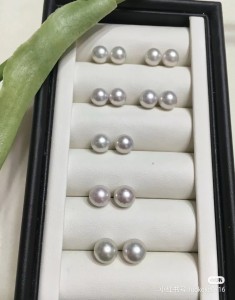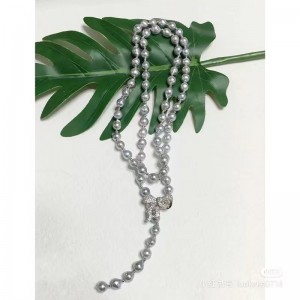1. Why are there gray akoya pearls?
Akoya pearls come in three shades: white, grey and gold. Among them, white pearls are the most common, while gray and gold are rarer. To put it simply, during the growth of akoya, a small part of organic matter invades into the mother mussels, making the pearl color gray. Therefore, the acquisition of gray pearls is “accidental”, “uncontrollable”, and “precious”.
2. Not all gray akoya are really hemp
Zhentama is the name given to the highest quality grey akoya pearls by Japan’s “Pearl Science Research Institute”. Only such pearls with a “Real Research” certificate can be “Zhentama”.
At present, many people call gray pearls “really hemp”. This name is actually incorrect. Generally, such pearls without certificates are not “really hemp”. However, because “grey akoya” is a bit of a mouthful, now this type of grey pearls are called “really hemp”. Although it is not accurate, it has become the consensus of everyone.
True scientific research certificate: The highest quality of gray pearls above 6mm is called “Zhen Duoma”, the next level is “blue rose”, and the highest quality of gray pearls below 6mm is called “Caiyunzhu”.
3. What is no toning and what is toning (irradiation, dyeing)
Because the good-looking silver-gray akoya is really rare, and everyone likes pearls of this color, so in order to meet the needs of the market, the Japanese have introduced an optimized (irradiated) pearl.
Natural color: The pearl core is white, and the gray is the color of organic invasion and natural formation.
Toning (Irradiation): Irradiation is the irradiation of gamma rays to make pearls a grayish-blue color.
Irradiation is also divided into two types: ①Irradiation of finished beads into gray-blue, which is the mainstream. ②The bead core is first irradiated into black, and the bead layer grows naturally, which will also be advertised as a natural color.
Post time: Jun-23-2022


